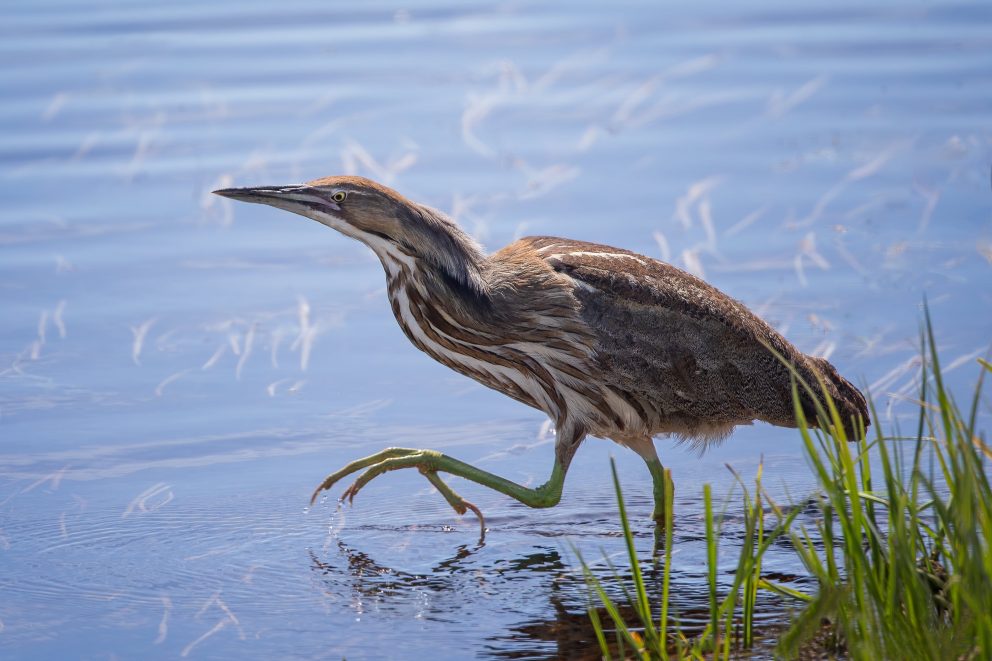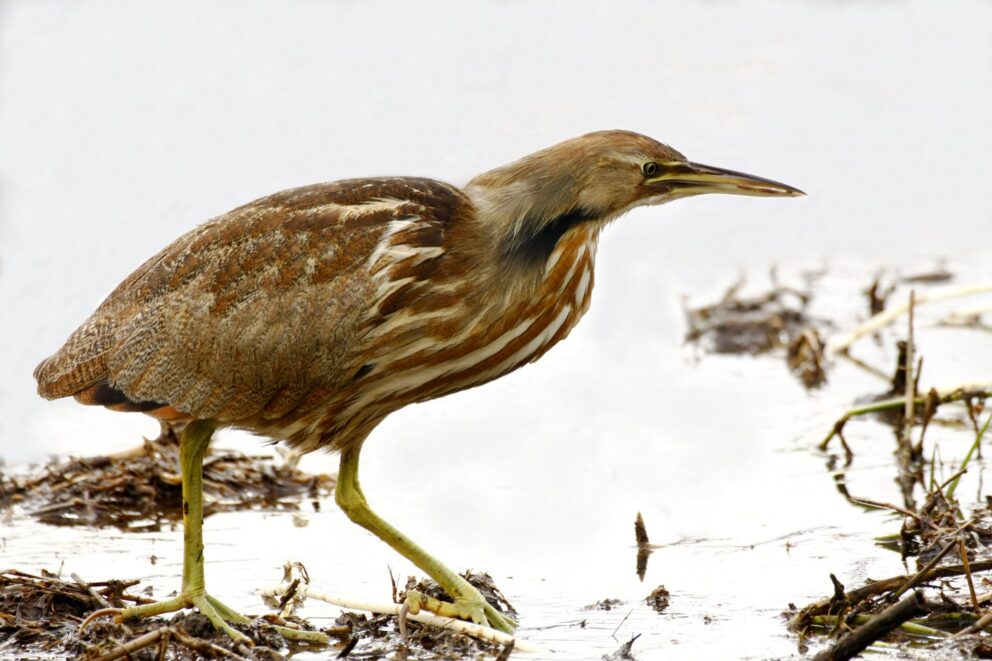- SCIENTIFIC NAME
- Botaurus lentiginosus
- CLASSIFICATION
- Bird
- LIFE SPAN
- 4-8 Years
- SIZE
- 23.5-33.5” | 0.8-1.1lbs
- STATE CONSERVATION STATUS
-
- Priority Species
- FEDERAL CONSERVATION STATUS
- Least Concern
- GAME STATUS
- Non-Game
- GAME TYPE
- None
- Washoe
- Humboldt
- Pershing
- Churchill
- Mineral
- Lyon
- Douglas
- Carson City
- Storey
- Elko
- Lander
- Eureka
- White Pine
- Esmeralda
- Nye
- Lincoln
- Clark
Habitat & Range
American Bitterns can be found in all sizes of wetland in their range. Typically, they prefer wetlands with high vegetation and aquatic plants. During the winter, they avoid frozen over marshes.
- Agricultural Lands
- Marsh
Threats
- Habitat Degradation
Natural History
American Bitterns eat insects, amphibians, crayfish, small fish, and small mammals. Overall their diet is very general and they are not picky. They are known to consume their prey head first after it has been shaken vigorously. Bitterns will choose tall cattail thickets for a preferable nest site, but will sometimes nest in grassland areas with tall bushes when suitable nesting habitat is less available. They are asocial migratory birds that head south during winter and north during the breeding season. When alarmed, they will stay in place with their beaks pointed straight up to blend in with its habitat.
Fun Facts














